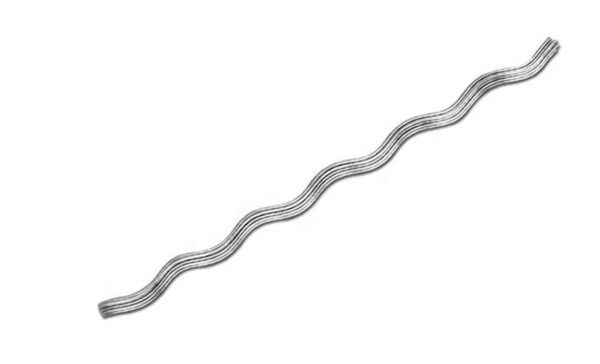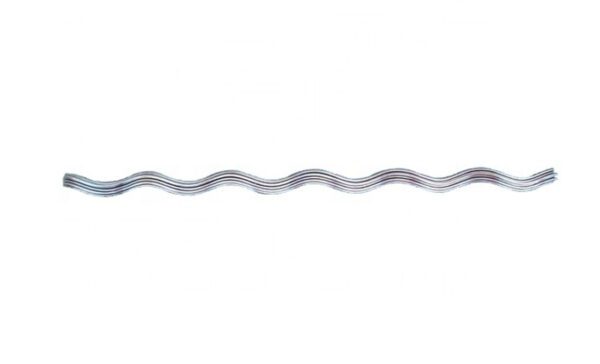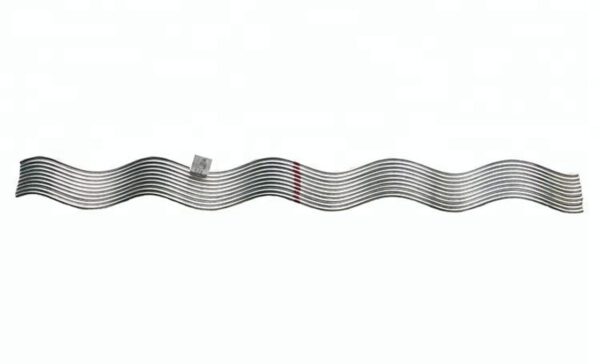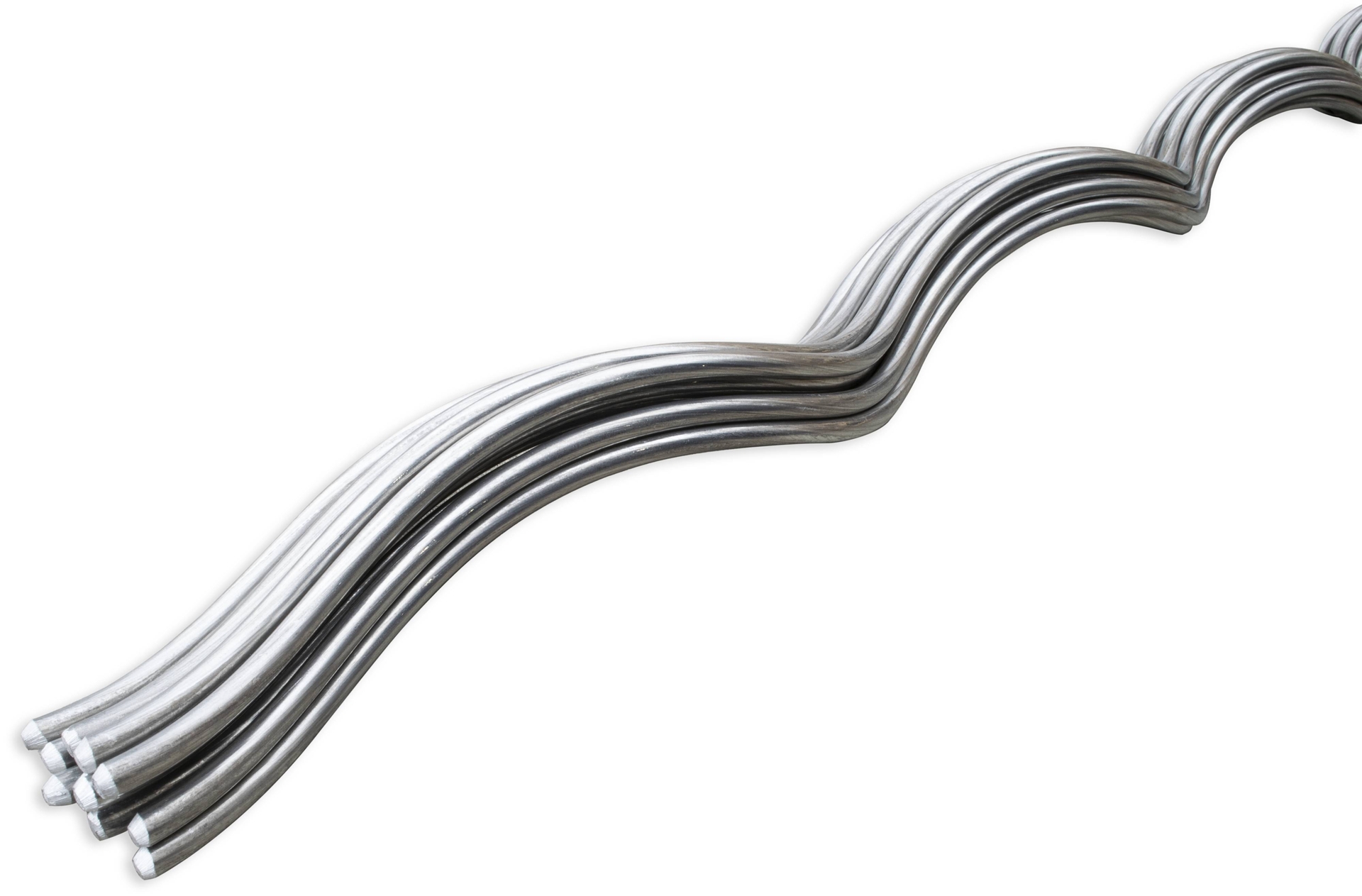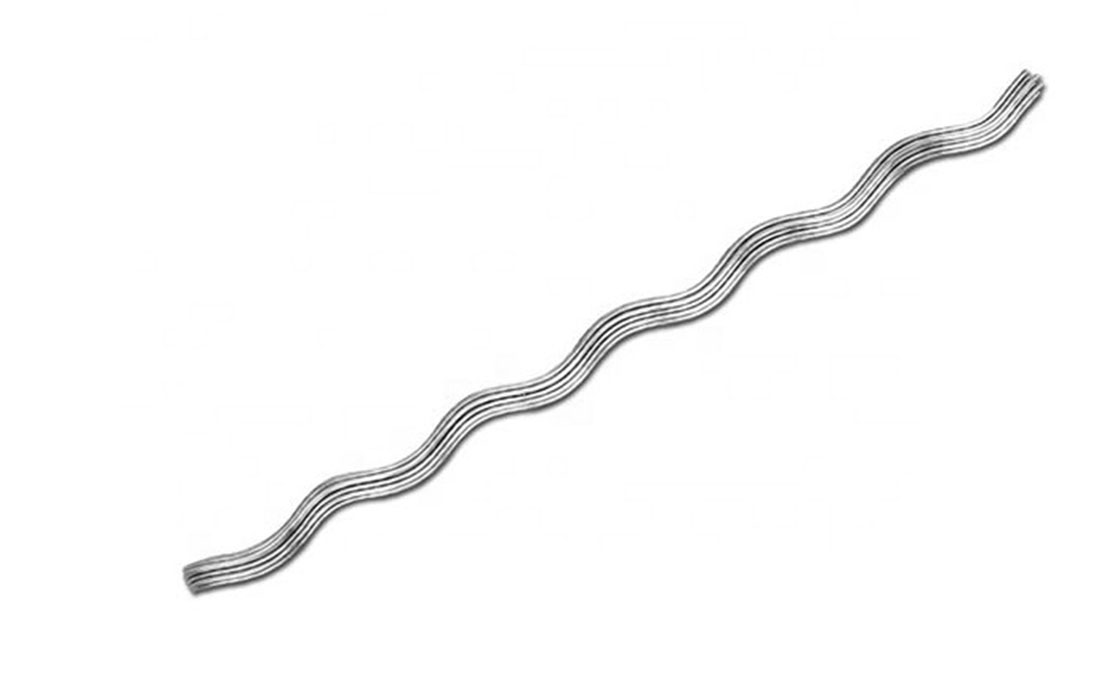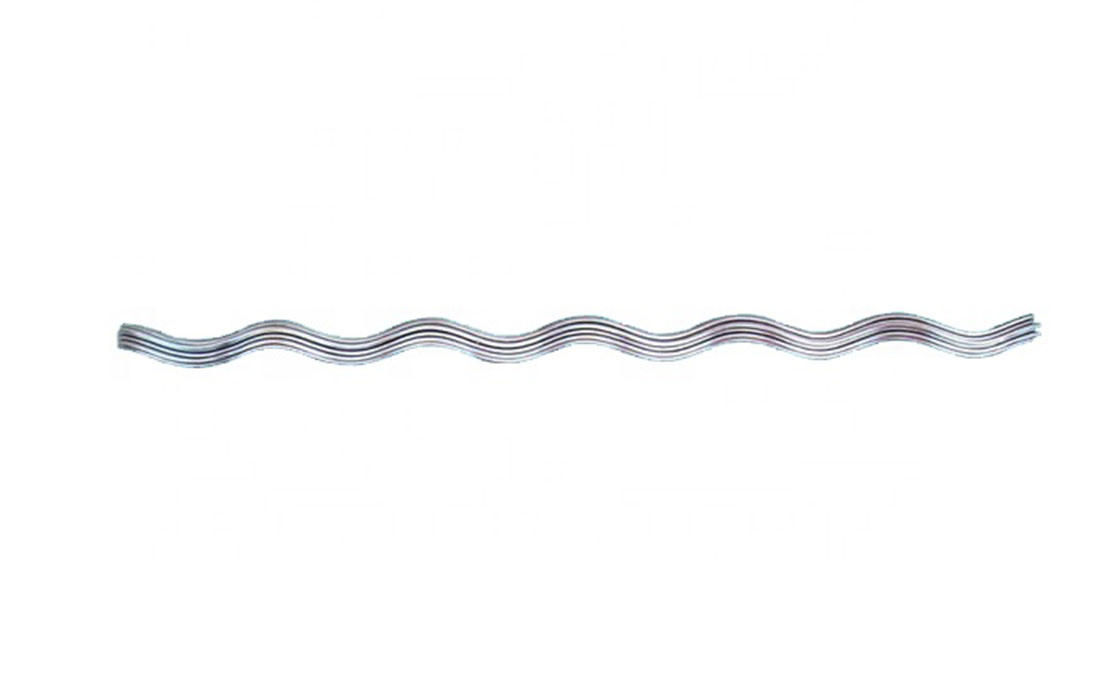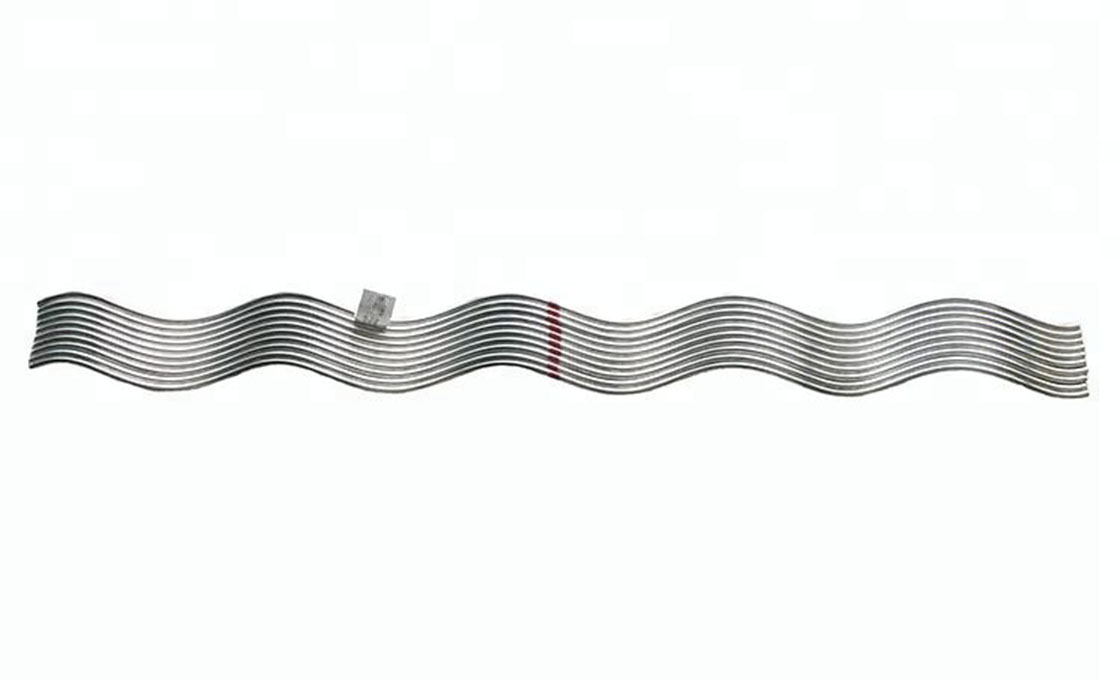Armor Rod
- Description
- Specification
- Design
Description
The armor rod is also called armour rod or rod armor. The armor rod is an accessory used for aluminum conductor, steel reinforced(ACSR, all-aluminum alloy conductors(AAAC), and aluminum clad steel conductor. QUAN PHAM armor rods play an important role in the armor rods transmission line and distribution line.
The raw materials of the armor rod are aluminum wire, galvanized steel wire, and aluminum clad steel wire. The customer chooses the armor rod material according to the conductor’s raw material.
The armour rod material should be similar to the conductor surface material, avoiding corrosion between different elements. All types of armor rods come with a color code that helps identify the conductor size easily. The color code is also regarded as a mark during installation.
As a professional manufacturer, supplier, and exporter, QUAN PHAM can support all sizes of armor rods, we also do customized armor rods. If you have any special requirements, please do not hesitate to contact our team.
Table of Contents
- 1 Armor Rod: The Complete Guide
- 2 What is an Armor Rod?
- 3 Why you Need an Armor Rod for Transmission and Distribution Lines
- 4 The preformed armor rods feature
- 5 The repair armor rod and connection armor rod features:
- 6 Features to Look for When Buying Armor Rod
- 7 Armor Rod Installation Process
- 8 Frequently Asked Questions (FAQs)
- 9 Conclusion
Armor Rod: The Complete Guide
 An armor rod, which is also known as an armour rod or rod armor is pole line hardware.
An armor rod, which is also known as an armour rod or rod armor is pole line hardware.
The preformed armor rod is designed to protect the cable against damage from shaking, abrasion, bending, and flash-over, it is used mainly in electrical, telecommunication, and construction projects.
QUAN PHAM armor rods have a rated strength of not less than 95 percent of the strength of the conductor on which it is used.
Before you make decisions to purchase this accessory, research is of the essence.
You need to purchase high-quality hardware accessory that is easy to use.
As you read on in this guide, you will be learning about what armor rods are, why they are needed, especially for transmission and distribution lines, classifications, features, installation process, etc.
Continue reading.
What is an Armor Rod?
Just as can be seen in figure 1, armor rods are uniquely designed to keep cables protected against compression, flash-over, bending, and abrasion.
They are used mainly to ensure cables are protected.
Armor rods are also used in repairing aluminum-based conductor damages.
You can also use them in restoring the mechanical strength of conductors and conductivity.
In most cases, you can use armor rod accessories for aluminum conductors, aluminum clad steel conductors, and reinforced steel.
In a nutshell, armor rods play a significant role when installing transmission and distribution lines.
Why you Need an Armor Rod for Transmission and Distribution Lines
There are quite a number of reasons why you need an armor rod for your transmission and distribution lines.
Generally, they keep cables protected from bending, compression, flash-over, and abrasion.
When you bend or compress cables, it’s quite difficult to use them in any transmission line.
So, if you want to improve efficiency in the transmission lines, you should have an armor rod.
Furthermore, they help in restoring the mechanical strength of conductors and conductivity.
Of course, it also plays a significant role when handling damaged cables.
The truth, transmission and distribution cables tend to go through a lot of stress when in use.
It is actually for this reason than an armor rod will be of great help.
Have you ever seen an Armor Rod?
 Now, why do you need armor rods for transmission and distribution lines?
Now, why do you need armor rods for transmission and distribution lines?
They help to make electricity or power transmission very easy.
When cables are always strong and straight they help to make the installation process very easy.
What’s more?
Armor rods make it easy to elongate cables from one pole to the other.
This makes it easier to fix different poles without worrying about the cable compressing or bending.
They help to secure cables and make sure they last longer.
Obviously, this will reduce expensive maintenance costs.
And guess what?
With armor rods, you will get 99% restoration of all your cables.
Clearly, the armor rod plays a fundamental role in transmission and distribution lines.
Just make sure you get the right armor rod from a reliable manufacturer.
According to the functions, armor rods are divided into three types which are:
- Performed armor rods
- Repair armor rods
- Connection repair rods
All these three types have unique functions.
Now, what makes these armor rods unique as pole line hardware?
a) Preformed armor rods
Preformed armor rods are designed to protect cables.
They safeguard cables from damage due to bending, shaking, flash-over or abrasion.
Basically, they have a level of strength.
Their level of strength is not 95% less than that of the conductor.
These performed armor rods always feature:
i. Reduced abrasions; the preformed armor rod double layers tightly wrap overhead line conductors, protecting them from abrasion.
ii. Anti-corrosion; they also come with anti-corrosion treatment. Therefore, they can serve you for a long time. Basically, this protects conductors from corrosion.
iii. Easy to install; with preformed armor rods, the installation process becomes simple and easy. You don’t have to hire a large workforce to go about the installation process.
The best part, you don’t need years of experience to install armor rods.
Besides, you don’t need extraordinary skills and tools.
Also, performed armor rods easily fit with most pole line hardware.
They are used widely on ADSS, ACSR, OPGW, AAAC, and others.
b) Repair armor rod
Repair armor rods are used in repairing damaged conductors that are aluminum-based.
They work by restoring the mechanical strength of conductors as well as its conductivity.
When conductors or earth wires are damaged (say less than 7% square space), these rods can be used to ensure they are restored to 100% strength and conductivity.
Both repair armor rods and connection armor rods share the very same features.
They also protect the transmission line from vibration.
Normally, when you install an armor rod, it helps to enhance the ability of conductors to survive exhaustion forces.
Implying, your transmission and distribution lines will serve you for years.
Don’t get me wrong here, this does not imply that they work as vibration control systems.
From experience, repair armor rods are quite useful in extra-high voltage applications.
Depending on the project at hand, you can purchase one that meets your unique application requirements.
c) Connection repair rod
Connection repair rods have the same features as repair rods.
Some of these features include:
- High electrical conductivity; sands within armor rods have high electrical conductivity. Implying, linking armor rods to earth wires ensures fast and effective power transmission.
- The installation process is easy and simple. The conductor power never affects the installation process – in fact, you don’t have to turn off the power during the installation process.
Normally, armor rods are elastic and light, making them easy to install.
Now, depending on the application at hand, you can go ahead to choose an appropriate armor rod.
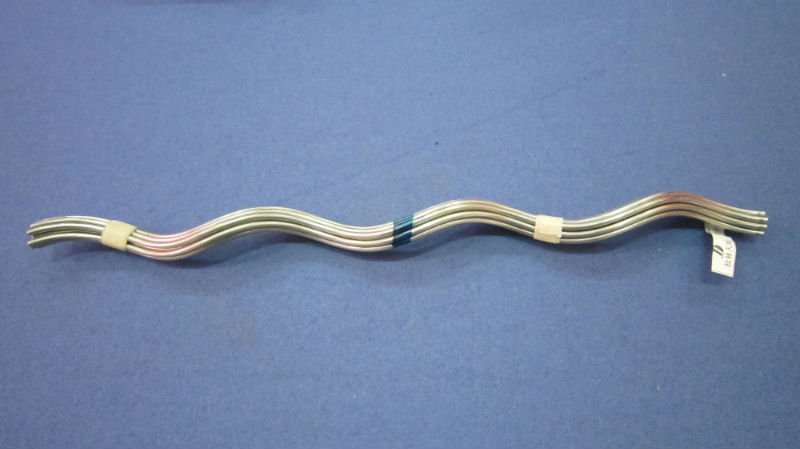
Armor rod for OPGW
The preformed armor rods feature
Decreasing abrasion
Double layers preformed armor rods wrap the overhead line conductor tightly, thus it will decrease the abrasion between the conductor and armor rod very well.
Anti-corrosion
Rax Industry armor rods are treated with anti-corrosion, so it will protect the conductor from corrosion.
Easy installation:
A single person can do the installation. He/she does not need experience, technical skills or special tools. Just install the armor rod by hand at the construction site.
Widely used:
Rax Industry preformed armor rods can be fitted with most of the pole line hardware, and are widely used on ACSR, AAAC, ADSS, OPGW and so on.
Rax Industry repair armor rod and connection armor rod are used to repair damaged aluminum-based conductors. They restore the conductors’ mechanical strength and conductivity. When conductor or earth wire is damaged less than 7% square space, Rax Industry armor rod will restore 100% conductors’ mechanical strength and conductivity.
The repair armor rod and connection armor rod features:
High strength; restore mechanical strength 100%
High electrical conductivity
The sands inside the armor rod have high electrical conductivity. Thus after the armor rod is connected with the earth wire, the power transmits efficiently.
Easy installation
The installation is easy and simple, not affected by the power in the conductor. No need to switch off power during the installation. The armor rod is light and elastic.
Features to Look for When Buying Armor Rod
Whenever you are buying an armor rod, you should look for the following key features:
i. Thermal rating
Thermal ratings are mostly not the same with every armor rod.
You need to be prepared to make the right decisions in your purchases.
Thermal rating is mostly continuous within high-temperature suspension clamps of 250°C.
ii. Single and double support lengths
Both single and double support lengths are needed to meet different installation needs.
Not all projects will require single armor rod lengths and not so many of them will need double support length types.
So you are the one who will be able to choose what is right for you.
iii. Diameter range
Diameter ranges will always differ.
You need to choose the specific range when ordering your purchase.
It is important to choose an armor rod with a suitable diameter for your applications.
iv. Nominal conductor size
These sizes always differ from one user to the other.
The nominal conductor size of the armor rod will determine the specific application.
v. Type of material
Quite a number of armor rods are made from either aluminum or galvanized steel.
But as a rule of thumb, choose a material that meets the specific needs of your transmission and distribution lines.
Also, the types of your conductor will determine the material types for your armor rod.
When you choose different materials, your transmission and distribution lines will have problems.
vi. Color code
Different types of these armor rods are designed with unique color codes.
It helps in identifying the conductor sizes and types easily.
These color codes are considered as a mark during installations.
They also help to ensure alignment is easy to enhance the installation process.
Armor Rod Installation Process
Installing the armor rod is simple and straight forward.
As I said earlier, you don’t need years of experience to accomplish the process.
Here is how you can go about the installation process:
- Start by marking the surface of the conductor where you want to install the armor rod. Basically, this is an identification mark that will make installation easy and simple.
- Take one piece of the armor rod. Looking at the armor rod, you will see a color mark (it is always aligned at the marking of the conductor).
- Now go ahead and start rotating armor rod at 1-1.5 grip distance. Then repeat this process.
- Go ahead to install the remaining pieces just like the first one.
Depending on the direction of the armor rod helical, wrap all of them to their end.
And don’t forget to read the information that the armor rod comes with.
It is useful during the armor rod installation process.
The detail Armour Rod installation step by step :
1. The first step is to make a marking on the conductor installation surface.
2. The second step is to take one piece of armor rod. The armor rod color mark is aligning at the conductor marking which is made on the first step. And then rotating the armor rod 1-1.5 grip distance.
3. The third step is to repeat the first step. To install the left pieces of armor rod like the first one so that all the armor rod is installed on the conductor 1-1.5 grip distance.
4. According to the direction of the armor rod helical, wrap all the armor rod to the end . Until then, the installation is finished.
Frequently Asked Questions (FAQs)
What Is an armor rod?
Armor rod is also called armour rod or rod armor.
armor rod is an accessory used on the aluminum conductor, steel-reinforced and aluminum-clad steel conductor to keep cables protected against compression, flash-over, bending, and abrasion.
How many types of armor rods are there?
According to the function, armor rods can be divided into 3 types:
- preformed armor rods
- repair armor rod
- connection repair rod
Which raw material for armor rod should i choose?
The raw materials of the armor rod are aluminum wire, galvanized steel wire, and aluminum clad steel wire.
The customer chooses the armor rod material according to the conductor’s raw material.
What are the features of a suitable armor rod?
When choosing an armor rod, you should look for the following key features:
- Thermal rating
- Single and double support lengths
- Diameter range
- Nominal conductor size
- Type of material
- Color code
How to install an armor rod?
The armor rod is installed by hand, with no tools.
- Make a mark on the conductor installation surface.
- Take one piece of armor rod. And then rotating the armor rod 1-1.5 grip distance.
- Repeat the first step. To install the left pieces of armor rod like the first one so that all the armor rod is installed on the conductor 1-1.5 grip distance.
- According to the direction of the armor rod helical, wrap all the armor rod to the end . Until then, the installation is finished.
Conclusion
As you can see from this guide, the armor rod is simple pole line hardware.
However, it plays an integral role in ensuring the efficiency and reliability of the transmission or distribution systems.
More importantly, you must purchase this accessory from a reputable and trusted manufacturer.
Here at Rax Industry, we strive to give you the best.
Rax Industry armor rods are high-quality pole hardware that helps to keep your transmission and distribution lines more effective.
Contact us today for standard or custom-made armor rods.
Armor rods are of the factory pre-formed type and are made of a material compatible with a conductor, ground wire and installed in the suspension clamps. Rods are shaped in such a way that they will grip the conductor and ground wire tightly.
The rods are capable of being installed by hand without special tools. The length of the armor rods can be determined by the customs.
Armor rods are of aluminum alloy for use on the phase conductors, and of aluminum clad steel for use on the overhead ground wires.




